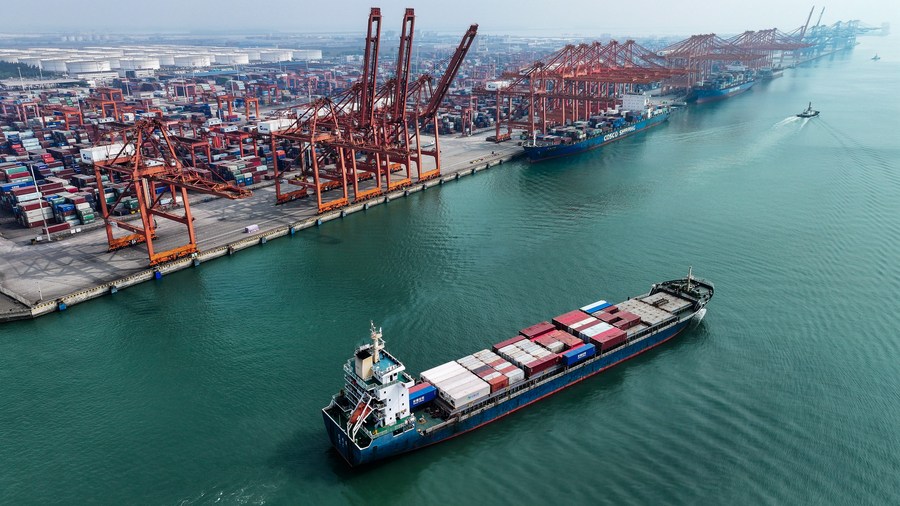China’s robust export sector is poised to hit a record high this year, driven by a surge in demand from American companies rushing to stockpile Chinese goods ahead of potential steep tariffs under U.S. President-elect Donald Trump.
Wu Zhiqiang, CEO of Shenzhen Lingke Technology—a leading manufacturer of lighting products with extensive factory networks across Thailand and China’s Pearl River Delta—told Nikkei Asia that many U.S. importers aim to “build a buffer against future uncertainties.”
According to Wu, Chinese manufacturers partnered with Lingke have reported larger-than-usual orders from major U.S. retailers since Trump’s election victory. “It’s clear that American buyers are aiming to maximise their profit margins before the new tariffs take effect,” Wu explained.
The increased demand for Chinese exports, ranging from battery components to syringes, pushed U.S. imports from China up approximately 6% year-on-year during the peak period of June to October, ahead of the holiday season. A report by Chicago-based supply chain firm Project44 suggests that many shippers advanced their orders to sidestep additional costs following the new tariffs imposed by the Biden administration in September.
The report also predicts this front-loading trend will persist, as additional tariffs are expected once Trump assumes office in January.
During his campaign, Trump vowed to implement tariffs of up to 60% on all Chinese goods. This week, Beijing announced retaliatory measures, including a 10% tariff on U.S. imports and a 25% levy on goods from Canada and Mexico, citing efforts to curb illegal drug trafficking via Mexico.
Last week, Trump appointed hedge fund manager Scott Bessent as Treasury Secretary. Bessent, a vocal advocate of protectionist trade policies, has criticized China’s exploitation of the open U.S. market.
Companies brace for fallout: Major corporations like Microsoft, HP, and Dell are racing to source electronic components before the tariffs take effect. The Port of Los Angeles reported handling over 900,000 twenty-foot equivalent units (TEUs) in October—up 25% year-on-year. Gene Seroka, the port’s executive director, attributed the cargo surge to shippers rushing to beat potential tariffs after Trump’s inauguration.
“We are seeing significant front-loading this year,” said Nick Marro, Chief Analyst for Global Trade at the Economist Intelligence Unit. “Businesses must adapt to a landscape of heightened geopolitical uncertainty.”
China’s exports rose unexpectedly by 12.7% year-on-year in October, the fastest growth in 27 months, buoyed by technology-related products like semiconductors and home appliances. Exports to the U.S. grew 8.1% in October, accelerating from a 2.2% increase in September.
Larry Hu, Chief China Economist at Macquarie Group, predicts that China will reach a record-high $3.54 trillion in export value in 2024, surpassing the previous record set in 2022. The trade surplus is also forecast to reach an unprecedented $1 trillion.
However, experts caution that the benefits of advance ordering may be short-lived. “We expect the front-loading effect to boost exports in the first half of 2025, followed by a slowdown in the latter half,” economists at Barclays noted in a client advisory. Barclays estimates that a 30% tariff hike by the U.S. in the second half of 2025 will limit China’s economic growth to 4% for the year.
Macquarie’s Hu warned that a 60% tariff increase could lead to an 8% decline in China’s exports over the next 12 months, exacerbating business uncertainty and deterring new investments.
In response to these challenges, Chinese Vice Commerce Minister Wang Shouwen announced plans to bolster foreign trade through new tax incentives and logistics policies to help exporters maintain orders and secure global market share. Wang also emphasized China’s willingness to engage in “active talks” with the U.S. to stabilize bilateral trade relations.

